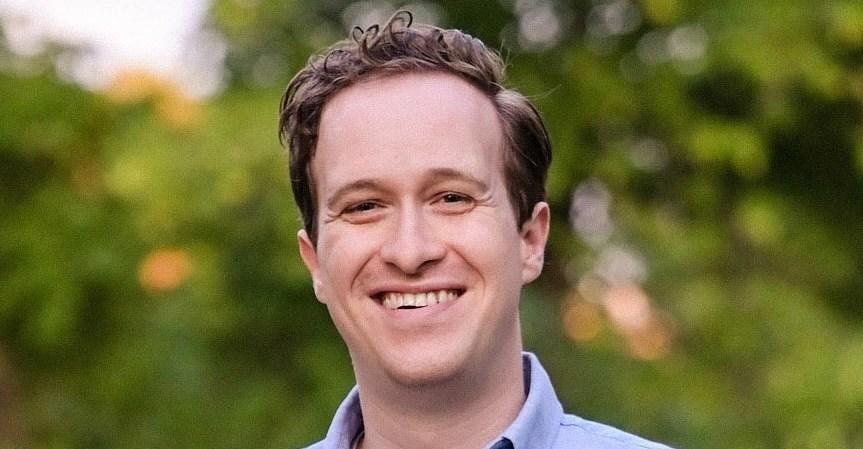Why you’ve never heard of this common eating disorder behavior — and why that’s a problem
Increased awareness is the first step to helping more people — particularly teens.


Editor’s note: This story includes detailed discussions of disordered eating behaviors that may be disturbing or triggering to some.
Beginning in her youth and lasting for more than two decades, Heidi McLachlan struggled with a negative body image. Her efforts to avoid weight gain at all costs led her down a path of disordered eating behaviors including anorexia nervosa and chewing and spitting.
Chew and spit (CHSP) is the practice of chewing one’s food and then spitting it out in an attempt to get pleasure from tasting it without ingesting calories.
For McLachlan, chewing and spitting began as a symptom of anorexia nervosa — just another one of several strategies she used to steer clear of calories.
She says she began the behavior while working at a job where a large candy bowl was kept in the reception area. She explains that it was “sitting there all the time” and represented a constant temptation for her. “That’s kind of all I could think about all morning was ‘When can I go grab those chocolates and chew and spit them in the bathroom?’” When she did so, she experienced “a little bit of a dopamine hit ... followed by shame.”
But the anorexia and chewing and spitting took their toll on her quality of life. She dealt with social isolation, dental troubles, “constant” anxiety, emotional pain, and even suicidal ideation from the extent of hopelessness she was experiencing. “I truly believed that I was alone in being wrapped up in this destructive cycle,” she explains.
Now recovered and a licensed eating disorder recovery coach based in Saskatoon, Canada, McLachlan knows she isn’t alone in her experience.
Over the decades, she has seen firsthand the significant attention and research eating disorders like anorexia and bulimia have received, and has become concerned that more people aren’t aware of chewing and spitting.
That sentiment has only increased as she has met with more and more of the people needing care for it. “We have noticed an increase in those struggling with chewing and spitting reaching out for help,” she says, referring to patients in her practice.
Some of the patients she helps today engage in chewing and spitting alongside other disordered eating behaviors such as purging, extreme dieting, fasting, and bingeing. For others, it’s the only disordered eating behavior they engage in.
Additional eating disorder specialists have noticed similar trends with chewing and spitting.
Jason Nagata, a pediatrician specializing in eating disorders at UCSF Benioff Children’s Hospital in San Francisco, tells Vox that the number of teens who have been hospitalized for eating disorders at the hospital he works in has doubled since the pandemic began — including those depriving themselves of key nutrients by chewing and spitting. “I have cared for many patients who have chewed and spit their foods, developed eating disorders, and were subsequently hospitalized for medical complications of their eating disorder,” he says.
James Greenblatt, chief medical officer at Walden Behavioral Care in Dedham, Massachusetts, and the author of Integrative Medicine for Binge Eating and Answers to Anorexia, tells Vox that “almost a quarter of patients with eating disorders have used chewing and spitting.”
These experts believe increased awareness of the behavior and its consequences could be helpful. They say it’s essential for those who engage in chewing and spitting to know they are not alone, and also to know this is a problem they can seek help for.
Vox interviewed 10 top eating disorder researchers, coaches, physicians, and clinic directors who all agree the behavior is more troubling than some may realize. Critically, they said, it’s also understudied, deserves more research, and, some argued, could benefit from an updated inclusion in the handbook doctors use to treat eating disorders.
How common is chewing and spitting?
Guidance is already readily available for established eating disorders like anorexia nervosa and bulimia nervosa, but it’s much rarer for lesser-known behaviors like CHSP. The studies that do exist, however, show that chewing and spitting is common enough to be concerning — especially among adolescents.
From one 2018 study conducted in Australia, for instance, we learn that 0.4 percent of adults (with a median age of 39) engage in the behavior. While that was a very small study that may capture only a fraction of the adults who actually do this, if we were to assume similar rates in the US and project that figure out over the 258 million adults living there, that figure would mean more than 1.3 million of them engage in chewing and spitting. (For contrast, consider that only an estimated 2.5 million adults in the US have been diagnosed with obsessive-compulsive disorder, or OCD.)
And things get especially worrisome when you look at a significantly larger study that was also conducted in Australia the following year. That one looked at the behavior in 11- to 19-year-olds alone and found it to be far more widespread. More than 5,000 students across 13 schools participated in the study, which showed 12 percent of them engaging in chewing and spitting at least once a month.
Again, assuming similar rates in the US, this means that of the estimated 26.2 million children between the ages of 12 and 17 living in the US, it’s possible more than 3 million of them engage in the practice.
Moreover, the study showed that 7.7 percent of participants “indicated to chew and spit up to 3 times in the previous 28 days, and over 2 percent reported chewing and spitting 8 or more times in the same period,” explains Phillip Aouad, a postdoctoral research fellow at the InsideOut Institute for Eating Disorders at the University of Sydney and a co-author of both the 2018 and 2019 studies.
Though such data may only scratch the surface of how prevalent chewing and spitting is, “the fact that over a tenth of adolescents engage in chewing and spitting highlights how common this ... behavior is,” says Nagata, referring to the study’s findings.
What concerns the experts?
While the practice of chewing and spitting is less recognized than other forms of disordered eating, those who have suffered through it — or helped others who have — know it still causes harm.
Greenblatt tells Vox in an email that the behavior can cause gastrointestinal issues such as acid reflux, stomach ulcers, and even excess weight. “Odd as it may seem, CHSP can indeed result in weight gain,” he explains. “While researchers aren’t sure as to what drives the connection, some speculate that it’s due to the ‘cold turkey rebound effect,’ i.e., drastically restricting food drives a vicious hunger that, later on, causes the person to binge and ultimately consume a far greater number of calories.”
Chewing and spitting can also lead to dental troubles. Because the people who engage in the practice aren’t swallowing the food they put in their mouth, they often eat a lot more and savor each bite for longer than they would if ingested. Large quantities of sugar frequently coming into contact with tooth enamel has been shown to cause gum deterioration and tooth decay. What’s more, as soon as food hits the tongue and chewing begins, the enzyme salivary amylase is produced in the mouth. Being slightly acidic, it too can contribute to cavities.
Among the lesser-known consequences of chewing and spitting is how the behavior may impact hormone levels and other chemical responses throughout the body. “Experts have speculated that CHSP might result in hormonal imbalances related to the cephalic response,” says Jennifer Wildes, director of the Eating Disorders Program at the University of Chicago Medicine.
The cephalic response is an anticipatory phase that occurs in the brain when the body prepares to receive food. It’s known to stimulate hormones, acid production, and saliva secretions. It’s possible that when the body is deprived of the nutrients that are supposed to follow, there may be negative side effects or neurochemical imbalances, though, “as far as I know, no one has looked at the neural correlates of CHSP,” Wildes explains.
Harry Brandt, chief of medical operations for the Eating Recovery Center in Denver, Colorado, and the chief of psychiatry at the University of Maryland St. Joseph Medical Center, agrees that more is likely happening during this process than we currently know about. He was the director of the eating disorder unit at the National Institute of Mental Health from 1987 to 1989 and has been working with eating disorder patients his entire career.
He tells Vox that he suspects “something is happening” hormonally and in the brain when people chew and spit. “When you put food in your mouth, you are triggering the body to prepare for caloric intake, and there may be a whole range of neurochemicals that are secreted associated with [that],” he explains. But the imaging studies confirming such impacts have not been done.
While scientists still don’t know exactly what happens in the brain from chewing and spitting, they have assessed its consequences on mental health.
Aouad says his research shows that CHSP is associated with people having negative perceptions of their quality of life — symptoms consistent with depression.
“There are adverse physical and psychosocial impacts due to CHSP, particularly if it is prolonged, chronic, or severe,” he says. He notes that beyond chewing and spitting being associated with negative emotions such as shame, “it can also become a maladaptive coping mechanism or escape from reality, which only temporarily provides pleasure or comfort.” In this way, “CHSP can become very addictive and ritualistic,” he tells Vox in an email.
Perhaps most concerning is that the behavior can be a “gateway” step toward more dangerous eating disorders.
“Individuals who participate in chewing and spitting behaviors face an elevated likelihood of developing an eating disorder,” Nagata says. A Johns Hopkins Medicine article similarly notes that the practice “can be the start of unhealthy attitudes toward food and may be part of a more serious eating disorder such as anorexia or bulimia.”
In addition to potentially leading to new eating disorders, chewing and spitting also likely increases the prevalence of existing disordered eating behaviors such as bingeing, vomiting, strict dieting, and laxative misuse, Aouad says. He adds that shape and weight concerns are common among people who chew and spit, and these concerns appeared “to increase the more frequently CHSP was engaged in.”
Indeed, Anna Karam Jones, a clinical psychologist at the UC San Diego Health Eating Disorders Center for Treatment & Research, cites Aouad’s earlier research, telling Vox that, “among individuals who report having ever engaged in chewing and spitting behavior, more than 70 percent report also engaging in dietary restriction and binge eating.”
So why don’t we know more?
As illustrated, there are still many open questions regarding chewing and spitting, including how prevalent the practice is, what other ways it might harm its participants, the number of people who engage in the practice without employing other disordered eating methods, and whether chewing and spitting is better defined as a symptom of other disordered eating behaviors or as a problem in itself.
We also need to better understand how people are introduced to or begin the practice in the first place.
For McLachlan, chewing and spitting “happened naturally as a fear response” that stemmed from not wanting to ingest calories. That is, no one taught her to do it. That’s the case for some of her patients as well. Still others were introduced to chewing and spitting by their friends, and it would be useful to know how that happens and whether there are any other outside influences at play.
So why don’t we have more definitive answers to these questions? One explanation Greenblatt points to is that much of the research in mental health is driven by pharmaceutical incentive. Because “it is unlikely that there would be a medication to specifically address CHSP,” he says, “my concern is that future research [driven by the pharmaceutical industry] would be limited.”
Many of the experts point to another explanation for why we don’t know more: All US-based doctors who treat eating disorders turn to the same source of information, The Diagnostic and Statistical Manual of Mental Disorders, or DSM. The DSM handbook is the authoritative guide used for matching patients with specific mental health diagnoses and for recommended treatments. It’s also the source insurance companies turn to when determining which diagnoses receive what coverage.
In the fourth edition of the DSM, chewing and spitting was mentioned as one example of an “other specified feeding and eating disorders,” or OSFED; in the latest edition of the DSM, known as DSM-5, chewing and spitting isn’t mentioned at all (though it still technically falls in the OSFED category). The OSFED category is where all known disordered eating behaviors or symptoms go until they have enough data to support their own classification or subtype definition — something only a handful of eating disorders have.
To have a disorder defined in the DSM is to draw more attention to it, to better diagnose and treat patients presenting for help with it, and to increase the likelihood of better insurance coverage from providers. It also helps draw in more research attention.
B. Timothy Walsh is a professor of pediatric psychopharmacology at Columbia University’s Department of Psychiatry who chaired the eating disorders work group for the two most recent editions of the DSM. He tells Vox that chewing and spitting is not defined as its own eating disorder or subtype because we don’t have enough data to support that. In other words, we don’t know as much about CHSP as we need to, in part because it’s not in the DSM, but it’s not in the DSM because of a lack of research. For clinicians like Nagata, it’s a frustrating circular problem.
For a disorder to be formally defined and classified in the DSM, Walsh says characteristics of the people who engage in it have to be fully described, criteria about its known prevalence has to be met, and a more detailed understanding of how the disorder occurs has to be established. ”That just doesn’t exist for chewing and spitting yet,” he says.
To help researchers involved in defining DSM disorders learn more, Brandt says that chew and spit data should be “isolated” from other eating disorder data as it’s often lumped in with bulimia and anorexia research or considered by some researchers to be an anorexia or bulimia subtype.
In addition to isolating such data, population surveys and research grants could be helpful in measuring its prevalence and how it occurs, as would more clinicians screening their patients for this behavior specifically and not merely as a symptom of other eating disorders. This would help researchers not only establish how pervasive it is but also help patients receive more targeted care.
More data, less stigmatization
Finding those patients could prove difficult, however, as the experts say yet another reason we don’t know more about the people who chew and spit is that most of them tend to hide the habit very well.
McLachlan says she’s treated some patients for months before they’ve confessed even to her that they have this problem. She says it’s a habit many people are extremely embarrassed by, one they don’t want discovered. “If we start to reduce that shame and stigma, I think the [percentages of people we know who do this] would go up,” she says.
Complicating matters further is that some of the people who engage in CHSP don’t think of it as a serious problem and don’t consider that they may have an eating disorder.
(The line between eating disorders and dietary practices can be difficult even for the experts to define. While exercising and meal replacement shakes are generally accepted as standard dietary measures, compulsive exercise and deliberately skipping meals completely are where things can become problematic.)
As a general rule, though, Aouad says that any practice that deprives the body of the nutrients it needs would never be recommended by medical professionals as a sound, long-term practice.
McLachlan agrees. Regarding the people who chew and spit, she says that if they didn’t have an unhealthy association with food “or if it wasn’t a disordered behavior, they’d just swallow it.” If a behavior is negatively impacting one’s life or if it’s something someone would be ashamed to admit to or recommend to a loved one, then it’s a problem, she adds.
Raising awareness that this is disordered eating and reducing stigma associated with the practice could do a lot of good since someone not seeking help prevents their own care and may prevent others from receiving better treatment options as well.
That’s because people not coming forward makes it difficult for researchers to collect enough data to inform clinicians and insurance companies on which elements of the practice need to be covered and cared for.
“If people aren’t presenting for treatment, data doesn’t accumulate,” Walsh explains.
Brandt points out that such accumulation of data leading to improved DSM categorization and care recommendations is something that has been done before.
In the DSM-4, for instance, binge eating disorder wasn’t yet defined in its own category either. Prior to the latest DSM edition that was published in 2013, binge eating disorder was defined as a subtype of bulimia nervosa because both behaviors involved people binge eating large amounts of food. A distinction arose, however, when it was shown that some people binge eat without compensating afterward by way of vomiting, abusing laxatives, skipping meals, or exercising compulsively. “The way binge eating disorder got defined [as an eating disorder] was that people like me identified that there are some people who binge large amounts of food just like somebody with bulimia ... but without the compensatory measures,” i.e., vomiting, Brandt explains.
Until similar distinctions are established and additional data is collected, compiled, and presented for chewing and spitting, Walsh says physicians can still diagnose and treat it as recommended in the DSM-5 OSFED category. (Consistently recording CHSP patients presenting for treatment this way could be yet another way in which more data could accumulate.)
In the meantime, more researchers could begin isolating existing CHSP data and seeking to answer some of the unanswered questions about the behavior. Brandt says such research “definitely should be” happening if for no other reason because doing so could lead to increased public awareness which could lead to more people seeking and getting the help they need.
“Individuals struggling with eating disorders like chewing and spitting often feel like they are the only ones struggling in this certain way,” says McLachlan, again reflecting on her own experience. “The more awareness there is that others struggle in this way too, the more we will see individuals reaching out for help.”

Govt does not believe in using NAB for political vendetta: PM Shehbaz
- 16 گھنٹے قبل

Traditional gender roles won’t get men what they want
- 7 گھنٹے قبل

Betting scandals broke sports. Could prediction markets do the same to politics?
- 7 گھنٹے قبل

Manafaingana ny famonjenan’ireo tanalahy mampalaza an’i Madagasikara ireo manam-pahaizana satria efa mitatao ny afo.
- 7 گھنٹے قبل

AI ‘creators’ might just crash the influencer economy
- 9 گھنٹے قبل

President confers Nishan-e-Pakistan on Indonesian President
- 15 گھنٹے قبل

Skateboarding is better in hell
- 8 گھنٹے قبل

The Verge subscription turns one
- 9 گھنٹے قبل

How the Supreme Court is using Trump to grab more power for itself
- 6 گھنٹے قبل

Analogue is restocking its 4K N64 and making it more colorful
- 8 گھنٹے قبل

Genki’s colorful, powerful power strip is 25 percent off
- 8 گھنٹے قبل

OpenAI says it’s disabled ad-like app promotions in ChatGPT
- 9 گھنٹے قبل





